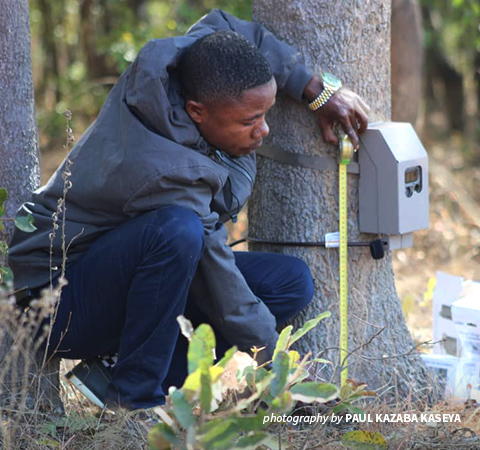Monitoring DRC’s forests and courts to protect pangolins

Demand for pangolin scales and meat is pushing the scaly mammal to extinction
The pangolin, with its small, elongated head, short legs, and three curved claws on its forefeet, is covered in shiny, sharp brown scales. This docile nocturnal mammal suffers from the growing pressure of poaching in its natural habitats in Africa and Southeast Asia.
"Contrary to its [pointed and scaly] looks, the pangolin is a peaceful animal, very taciturn. From the first contact with it, I understood that it is a solitary animal that seeks only to feed, to breed a little and to rest quietly far from any noise," reflected Albert Ankwanda Yungu, a researcher studying pangolins in the Democratic Republic of Congo. He is an ambassador of the IUCN Programme on African Protected areas & Conservation (PAPACO) in Lubumbashi.
"Pangolins are not easy to apprehend [in] the bush," he said. If you want to see a pangolin, you must get your hands dirty — they live in burrows, usually dug in the roots of large trees, often at the foot of mountains and near small streams.
"When we plan direct observations, we get up very early in the morning, walking after the clues that the animal leaves us of its passage. This can be food scraps, fecal matter, or urine. These clues lead directly to burrows where the animal lives alone or accompanied by an infant. We take it out of the burrow, but as it feels in danger, it curls up like a hedgehog, exposing us to the strongest parts of its body: its sharp scales or it wags its tail, trying to whip the aggressor," explained Ankwanda.

Pangolin researcher Albert Ankwanda Yungu installing a camera trap
Indirect observations are possible using camera traps. Ankwanda installs camera traps at the foot of trees, about 50 cm from the ground. They are recovered 21 days later.
The pangolin is very easy to catch during the day because of its poor eyesight. Although agile and an excellent forager, the pangolin, a species that does not reproduce until it is two years old, is under uncontrollable pressure from traffickers and poachers.
"In the Democratic Republic of Congo, the pangolin is one of the most poached and trafficked specimens for its meat as well as for its scales. Some justify their pursuit of this innocent creature by the need for sustenance. In contrast, others find in it an opportunity for enrichment," said Freddy Aluta, Legal Advisor of the Congolese Institute for Nature Conservation (ICCN) and Conference of the Parties at the Convention on International Trade in Endangered Species of Wild Fauna and Flora (CITES) Assistant of wildlife crime.
Conservation partnerships safeguard pangolins
To combat pangolin trafficking in DRC's protected areas, ICCN is working with the CITES country office to set up focal points in all sites, which report all cases of seizure of protected species, including pangolins.
A number of traffickers consider the DRC's forests as their pangolin farm where they can enter, shoot an animal, and leave as they please. To this end, poachers and traffickers enlist local communities, lending them scraps in return.
CITES listed all pangolin species on Appendix I as of October 2016, prohibiting the trade of pangolins and their products. To enforce this decision, CITES requires all member countries to send an annual pangolin trafficking report since 2018, which informs all seizures made.
"We have identified two focal points in 85 percent of the protected areas of the DRC, but we hope in the coming days to cover 100 percent and create another network that would cover the border posts. Above all, we want to offer them adequate training on the CITES convention so that they [are] well informed on the issue of pangolin traffic," added Aluta.
African Wildlife Foundation (AWF) is currently working in the Maringa Lopori Wamba and Bili-Uele landscapes — two natural pangolin ranges — supporting ICCN in building the capacity of eco-guards in identification techniques of species, including the pangolin, and updating their knowledge of the CITES convention.
"Today, we are in partnership with state agencies that intervene in the control of airports and ports for their capacity building in the identification of protected species to stop wildlife trafficking," explained Joe Kassongo, AWF Senior Legal Officer, who oversees the court monitoring program in Kinshasa. With support from the Bureau of International Narcotics and Law Enforcement Affairs (INL), AWF has already monitored two cases of pangolin scale seizures, one in Kinshasa (300 kg) and the other in Buta (3.5 kg).
He added: "We provide them with training modules on the CITES convention and identification techniques and human rights [so they can] present solid evidence before courts and tribunals. We hope to achieve more results by providing as much support as possible through the 'Fighting Illegal Wildlife Trafficking in the DRC' project implemented in the port of Matadi and the N'Djili International Airport in Kinshasa."
> Save pangolins by signing our pledge and spreading awareness for the most trafficked mammal